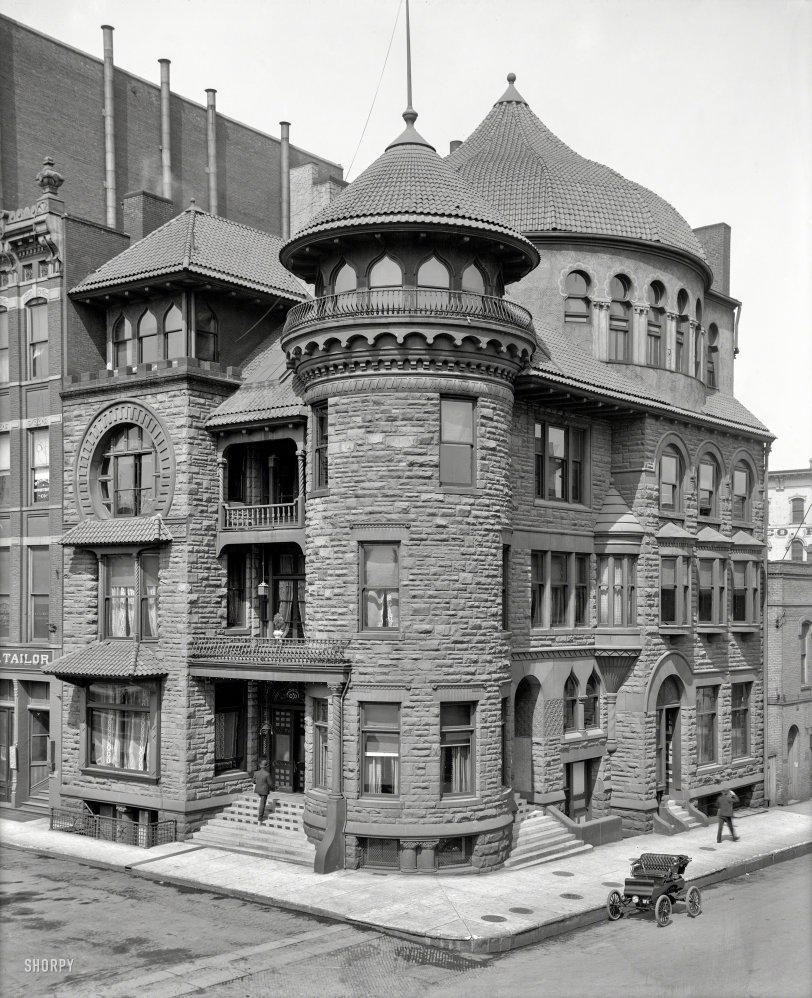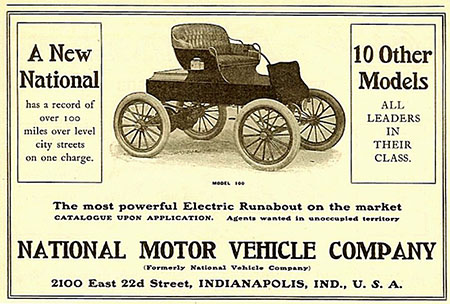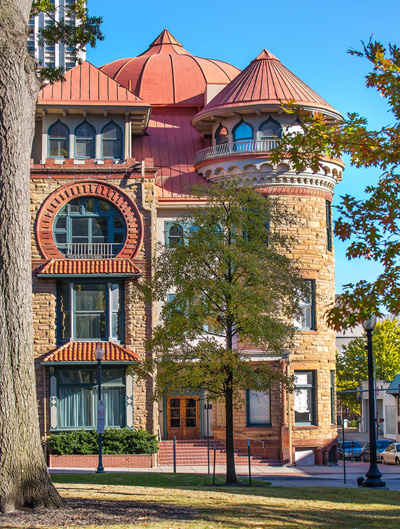


Framed or unframed, desk size to sofa size, printed by us in Arizona and Alabama since 2007. Explore now.
Shorpy is funded by you. Patreon contributors get an ad-free experience.
Learn more.

- Freeze Frame
- Texas Flyer wanted
- Just a Year Too Soon
- WWII -- Replacing men with women at the railroad crossing.
- Yes, Icing
- You kids drive me nuts!
- NOT An Easy Job
- I wonder
- Just add window boxes
- Icing Platform?
- Indiana Harbor Belt abides
- Freezing haze
- Corrections (for those who care)
- C&NW at Nelson
- Fallen Flags
- A dangerous job made worse
- Water Stop
- Passenger trains have right of way over freights?
- Coal
- Never ceases to amaze me.
- Still chuggin' (in model form)
- Great shot
- Westerly Breeze
- For the men, a trapeze
- Tickled
- Sense of loneliness ...
- 2 cents
- Charm City
- What an Outrage
- Brighton Park
Print Emporium
Tennessee Club: 1906

Memphis circa 1906. "Tennessee Club." Bonus points if you can identify the runabout. 8x10 inch glass negative, Detroit Publishing Co. View full size.
Details
Love the 'hidden' gutters on the pitched roof portions.
Not a mess!
All in the eye of the beholder, I guess: I love this building! Admittedly, it's not exactly following any of the rules for Richardsonian Romanesque, or Moorish Revival,or whatever else might be going on here... but what a treat of architectural mixed metaphors. Provides a valuable counterpoint to the predominant architectural blandness, both then and now.
What a mess!
It looks like the inside of the dumpster at a school of architecture.
1904 National Electrobile Special
Bruce Lancaster called it right—it's a 1904 Model 105 National Electrobile Special that cost $1,250 new. Without the leather top it would have been a $1,200 Model 100. Automobile Review called it "the most powerful electric two-passenger runabout on the market."
National's "new pattern 'C' springs" in front give it away (conventional elliptics in the back). The Piano Box style black body was six and-a-quarter feet long, and two and-a-half feet wide with the two-passenger carmine leather seat hanging over four inches on each side. The running gear (axles, wheels, etc.) and the supports for the top were also finished in carmine. It had a track of 54 inches and 32 x 3 and-a-half inch Continental tires were standard.
The six-pole 3 hp (overload capacity 9 hp) electric motor mounted on the rear axle was made by National, and drove through spiral gears that ran in oil inside a dust-proof case. The motor drew its power from a 36 cell Western brand battery that came with a rheostat to charge from any 110 to 125-volt circuit. The car was also equipped with an odometer and a combination volt/ammeter.
It had a compression band style brake along with an auxiliary electric hub brake. First gear would top out at 5 mph, while fourth gear was good for 17 mph. Reverse gear was activated by a button in the end of the steering/controller handle.
A clearer view of the ad picture of the runabout can be seen here.
Compliments To Memphis-
For preserving this handsome building. In our sunny San Diego (as well as in most of Southern California) it would likely only be a fond memory by now.
Runabout
I think it's a National Electric. The headlight looks electric, too.

It's still there!
It is now the The Burch, Porter & Johnson building, a well known Memphis law firm.

Interesting architecture
Kind of Richardsonian Romanesque with some Moorish and Oriental design elements. Best part is that the building still stands at N. Court and Second and is mostly intact (the balconies have been closed in). The repeating, carved "T" under the dentils is a nice touch for the Tennessee Club.
Noldsmoblie
The dash is similar to an Olds, but not the same. The Curved Dash Oldsmobile also had a transverse leaf front suspension, the car pictured has parallel leaf springs. I don't know what it is, but I hope some else can set us all straight.
The Tennessee Club building is fantastic, a wonderful Moorish architectural confection -- please tell me it wasn't torn down in 1952 to make room for a Piggly-Wiggly.
Runabout
I don't think that it is an Oldsmobile, although it has a tiller like they did. The Olds had an outwardly curving dash, unlike the vertical one on this car. It looks a little like the original Cadillac, but that car had a steering wheel.
A few more manhole covers please
One every 5 feet or so?
Curved dash Oldsmobile.
Built in my home town, Lansing Michigan.
























On Shorpy:
Today’s Top 5